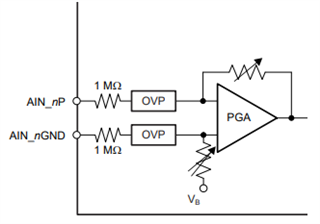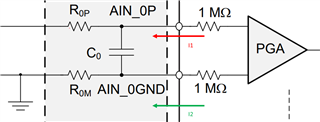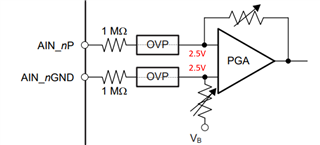Team,
Can you please help with the below?
I am looking for accurate leakage current values. On the datasheet, section 7.5, there is the Input leakage current formula. Considering the input range as 1.25 × VREF, the formula is:
My questions about that would be:
- is the voltage between the AIN_nP pin and GND or between AIN_nP pin and RTN?
- What is the current flowing through the RTN pin to GND? Does it follow the same formula?
- Maybe you could clarify the way the input supply is connected to come to that formula (i.e. supply and RTN connected to GND)
- Is the “2.5” number always constant and accurate? Would you have a tolerance value for that? Does the value change with temperature drift?
- Is Rin always the input impedance Zi (from 0.85 MΩ to 1.15 MΩ)? If I have resistors in series with the input, should I consider it here?
- If you have any equivalent circuit for me to base on and maybe include more details for the formula, that would be great. For instance, something like the picture below, but more detailed (resistor values, internal bias voltages, PGA gains, etc

Thanks in advance,
A



